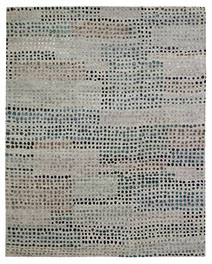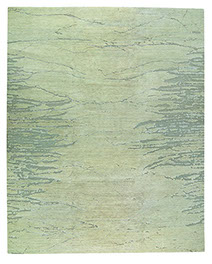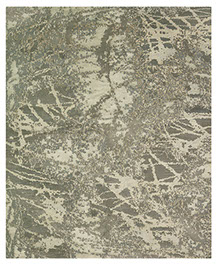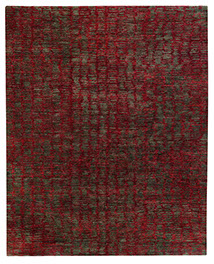

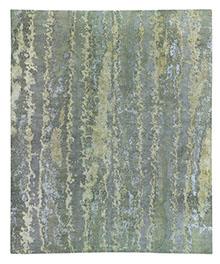
The art of making carpets by hand using the finest materials is cherished and nurtured by Tufenkian. Each carpet is carefully crafted, using methods and techniques that are virtually unchanged from time beyond memory in the service of contemporary design. The glowing variations inherent in natural materials and the human touch are celebrated by Tufenkian in every stage of the process, the result of a commitment to promote individuality and inspiration in all of its production. Truly, each carpet is unique unto itself, created over the course of a journey through a sea of human hands that weave it into existence. Tibetan sheep are raised by nomads in the Himalayan Mountains, which range from 12,000 to 20,000 feet above seal level. They produce lustrous, resilient, lanolin-rich wool that is considered the finest in the world for rug production. In order to preserve the natural lanolin, personality and character of its fibers, Tufenkian wool is never bleached or scoured. Instead, it is washed gently in local rivers to remove impurities. Using simple, foot-powered wooden wheels, the wool is spun into yarn. This process creates many of the beautiful imperfections found in Tufenkian carpets. There are usually four to five weavers for a 9’ x 12’ rug, which is made up of 650,000 to 1.5 million knots and takes an astonishing 3,000 hours of human labor to complete.
Tufenkian was founded in 1986 on James Tufenkian’s mandate to “leave the places we touch a little better than we found them.” With a business model that was developed with the intention of enriching the lives of its workers and their communities, Tufenkian leads the industry in humanitarian and environmental programs that secure the long-term health of the communities that it works with. The company invests over a million dollars of its annual profits into funding its Nepalese Worker Welfare Program and the Tufenkian Foundation, a non-profit organization founded in 1999. Before “no child labor” and “green” were buzzwords, Tufenkian refused to employ anyone under the age of 18, used traditional and earth-friendly production processes, and paid its workers competitive wages.
A commitment to social justice was central to Tufenkian’s inception. This is evident in the company’s firm stand against child labor and is why Tufenkian ensures that schooling, shelter, and health care are available to its employees, their families, and their communities. Rather than providing handouts, their aid model is capitalistic, folded into their business model: motivating employees to create the best product possible enables quality to drive the market demand, which in turn enables Tufenkian to provide profit sharing, better work conditions, and a better environment for its employees.
At Tufenkian, James Tufenkian's mandate to "leave the places we touch a little better than we found them" has always been at the core of everything we do. Our traditional, human-powered processes (which include carding, spinning, and shearing by hand and transporting materials by yak) are just one example of our dedication to minimizing Tufenkian’s impact on the environment, which began long before “going green” was the suggested or required thing to do. Over the years, Tufenkian has taken exceptional steps to preserve and improve the environmental conditions in our workplaces and in the communities that host them.
